Share your documents by using a template
SigningHub enables you to reuse the predefined workflow configurations on the same documents in the form of a workflow template. When used, the template applies all the workflow related settings (i.e. signers, reviewers, editors, meeting hosts, placeholders, signing sequence, signatures fields and their positions, reminders, form fields, permissions, etc.) on a document, making the workflow configuration process efficient and robust.
You can use your personal templates, as well as the enterprise templates (as maintained by your enterprise admin).
Share your documents by using a template
- Log into your Salesforce account.
- Click the "Opportunities" entity.
- Click the opportunity object from the list whose document is required to send, or create a new opportunity object as required.
This will open the opportunity and display its details.

- Scroll down to the "Notes & Attachments" section from the opened opportunity and click the "Attach File" button.
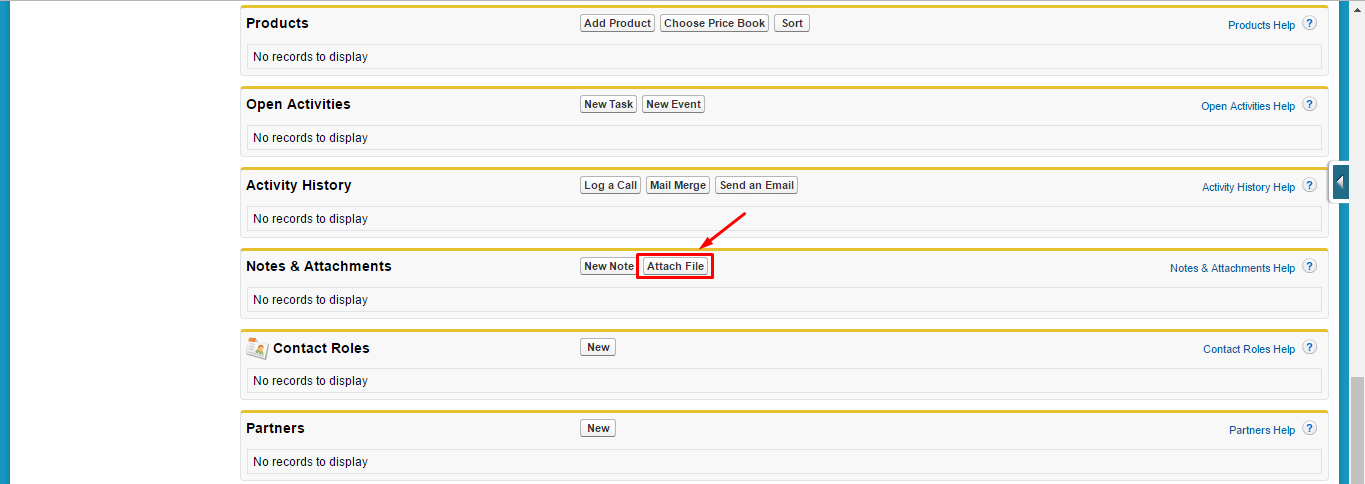
- From the next appearing screen, click the "Choose File" button to select a document (to sign) from your system.
- Now click the "Attach File" button to upload the file. The document uploading will start and its progress will be shown in the bottom left corner of the screen.
Repeat the steps 5 and 6 to attach multiple files.

- The uploaded file will be displayed at the bottom of screen accordingly. Click "Done" to return to the opened opportunity page.
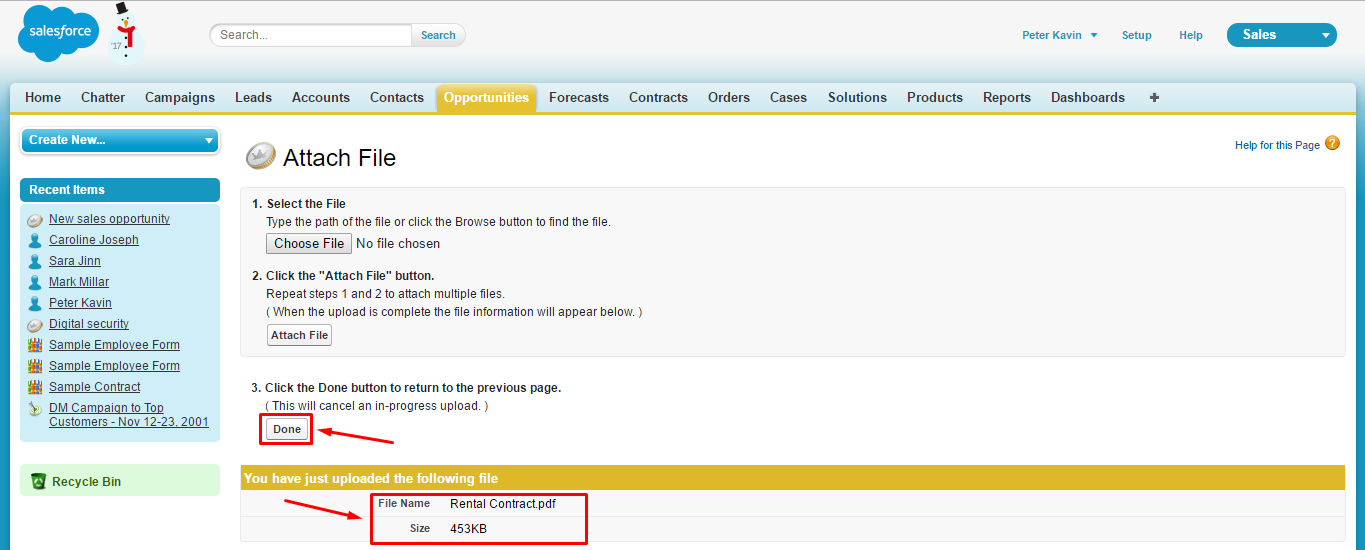
- Now click the "Share using SigningHub" button from the opportunity page.
If you couldn't find this option, it means the "Layout" of this entity has not been edited for SigningHub. Please edit the Layout first, see details.
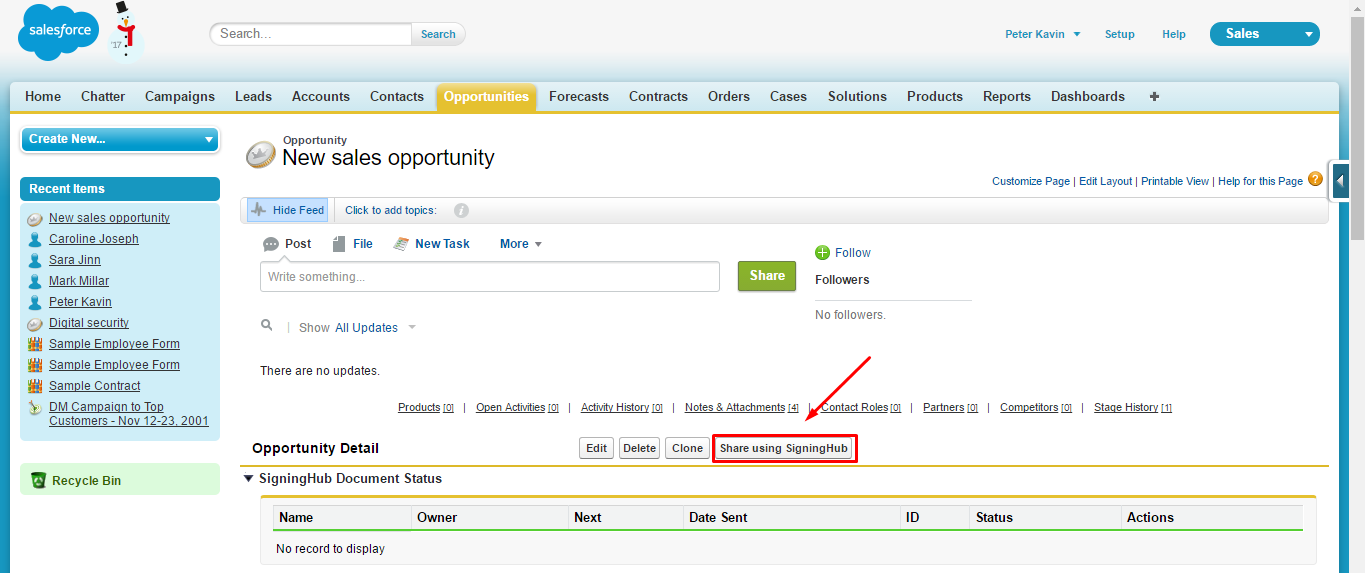
- In the next appearing screen, SigningHub will list all the documents that have been added in the "Notes & Attachments" section of this entity. Select the required document(s) to share and click the "Next" button. They will be shared as a package through a single workflow.
Please note, in case the selected document is other than PDF, then it will be converted to PDF before getting shared.

- Click
 against the document in a workflow package, on which you want to apply a template.
against the document in a workflow package, on which you want to apply a template.
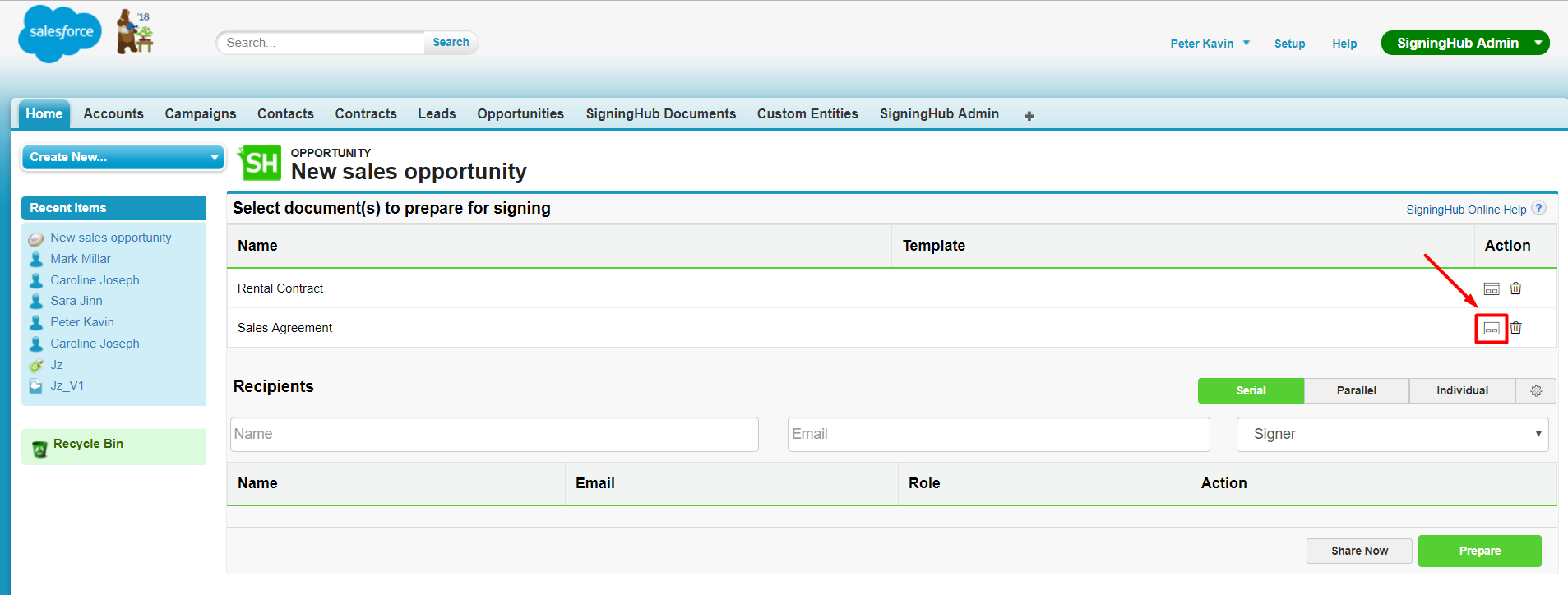
- A dialog will appear showing a provision to list your personal and enterprise templates. Select the required provision (i.e. Personal or Enterprise) to list the templates accordingly. Select a template from the list. The configurations of a locked template can not be modified.
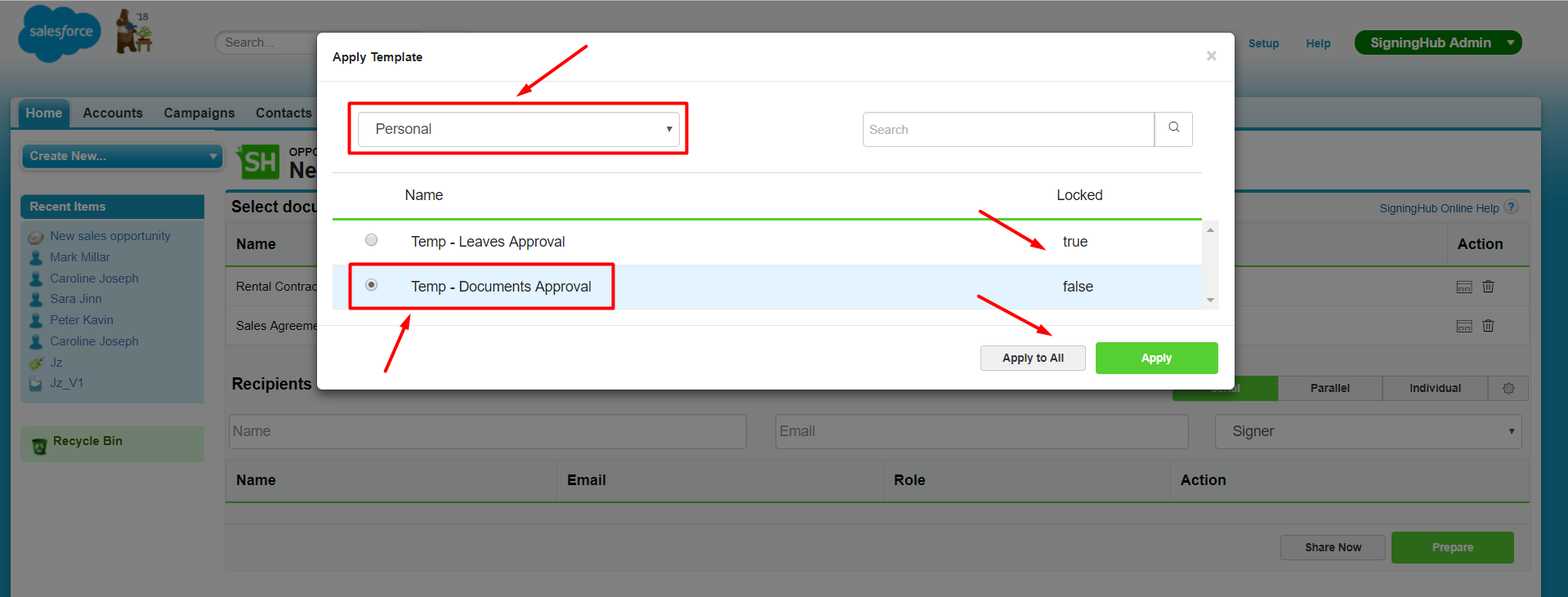
- Click the "Apply" button.
In case you want to apply this template on all the documents of the package, click the "Apply to All" button.
All the configurations saved in the (selected) template will be applied on the document(s) and displayed in editable mode (provided that the applied template is not locked) in the "Recipients" section. Change any configuration as required.
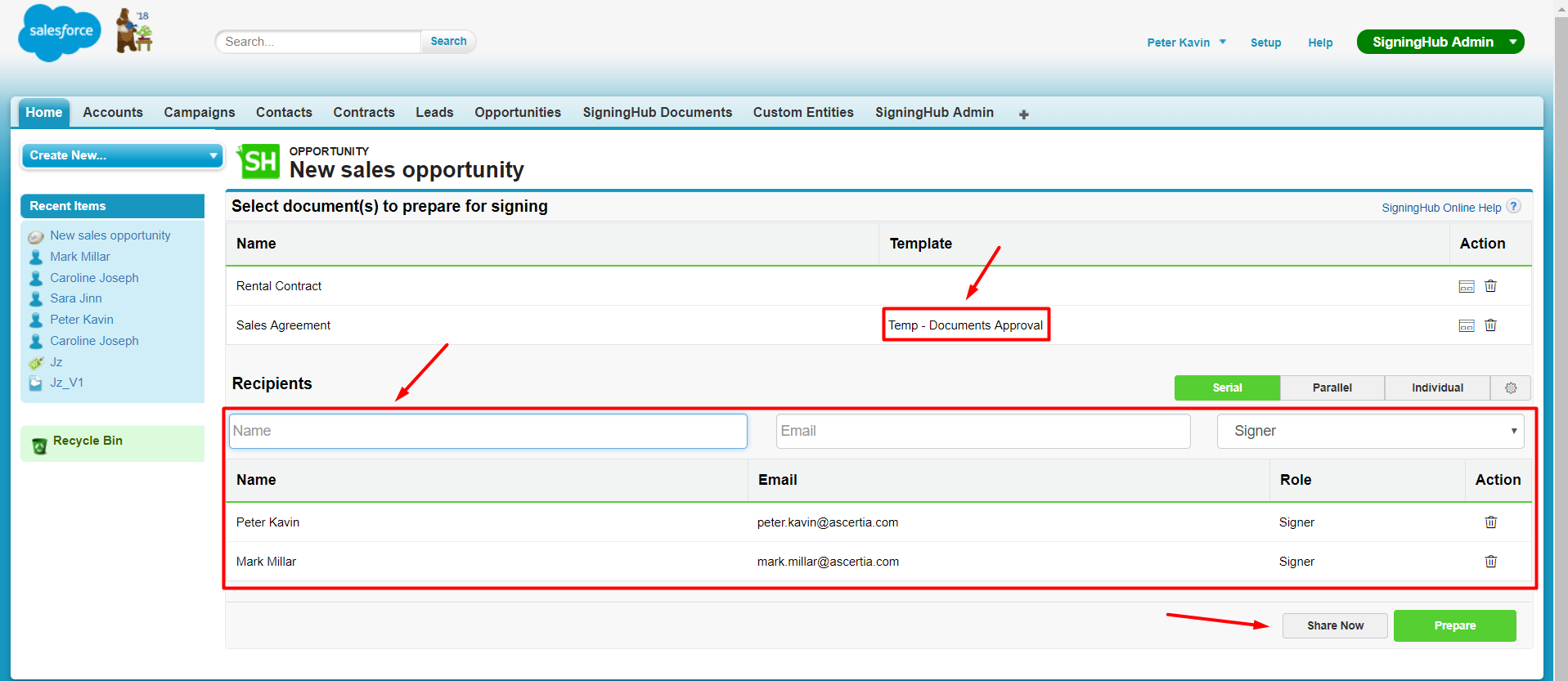
- Click the "Share Now" button to send off the documents package without going to the SigningHub interface. The shared document(s) package can be seen with the "In-Progress" status, inside your "SigningHub Documents" screen.
Click the "Prepare" button to go to the SigningHub interface and manually alter the template configurations before sharing the package. The authentication screen of SigningHub will appear within Salesforce, before you are moved to SigningHub interface, see details.
1. The "Layout" of the Salesforce entity whose documents are required to share for signing, must be edited for SigningHub for Salesforce, see details.
2. To experience the exact settings, it is recommended to apply a workflow template on the same documents (for which it was created). The actual positions of configured signature/ initials/ in-person fields may alter, if a template is applied on different type or size of documents.
3. When a locked template is applied on a document, SigningHub wont allow to change any predefined configurations. For more details, see template locking.
4. Whenever a documents package is shared, the workflow quota of respective document owner's account is consumed, and hence the available count is decreased by one.